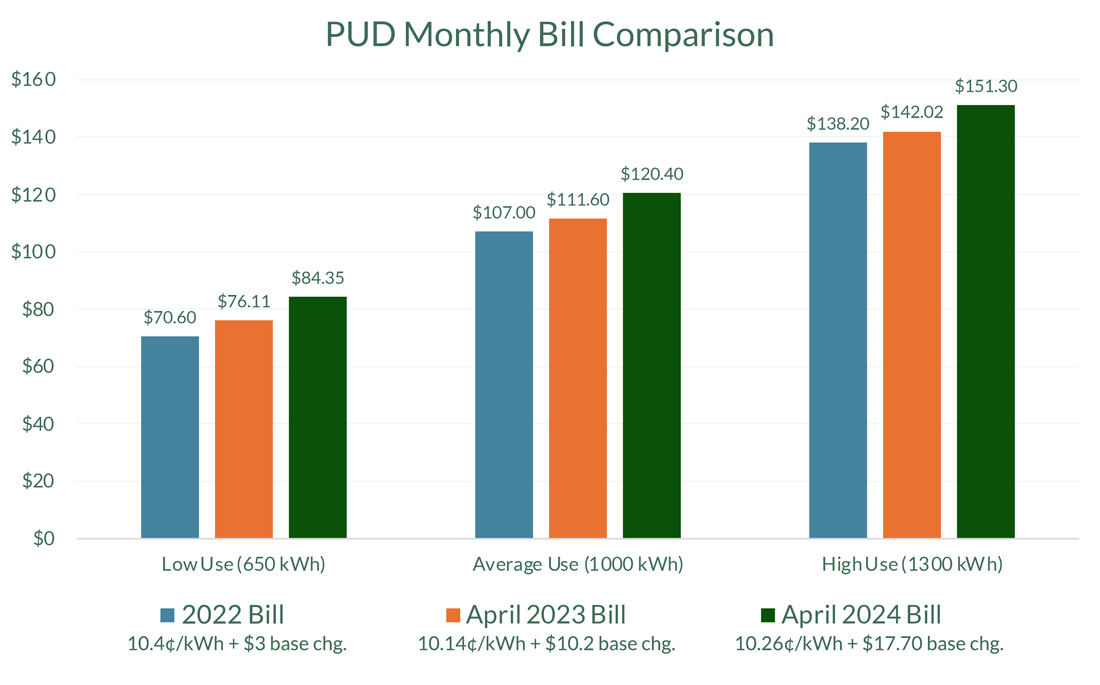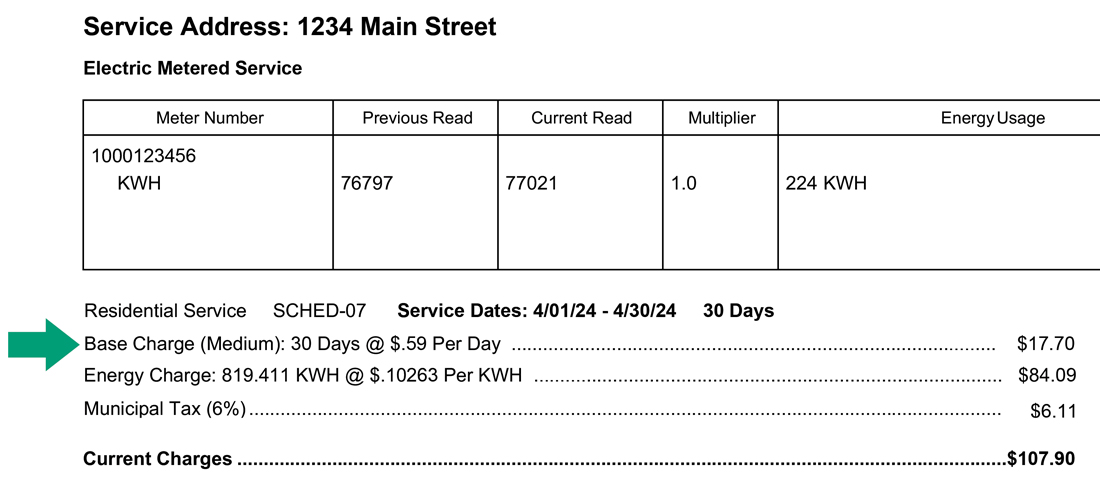
Residential base charge final phase implementation
The final phase of base charge implementation went into effect April 1, 2024
The PUD’s Board of Commissioners approved a revised implementation of the base charge for electric customers. The deployment schedule took place over two years rather than four. The final phase of implementation went into effect on April 1, 2024.
The PUD’s board approved the implementation of a base charge to its residential electric service rates (Schedule 7) on Nov. 19, 2019. After being delayed on March 23, 2021, due to the pandemic, it was officially implemented on April 1, 2022.
The rate structure change was required to:
- Address increasing fixed costs
- Fund critical infrastructure improvements that increase safety and reliability
- Support environmentally sustainable power
- Ensure stability for the utility as customer demand and use patterns change
The base charge applies per meter and is based on the type of building served and the amperage rating of the customer’s primary fuse box or breaker panel.
This change provided increased stability for the PUD as new homes connect to the electrical system and will pay for fixed costs of connecting customers to the grid, including billing and meter maintenance.
On April 1, 2024, the base charge for medium-sized customers (most single-family homes) increased from 35 cents/day to 59 cents/day, or approximately $17.70 per month. The energy usage charge for medium-sized residential customers increased from 10.14 cents/kWh to 10.26 cents/kWh.
The amount of the base charge is based on home size and type. Customers are categorized as:
- Small (multi-family dwellings or small electrical services like garages or well pumps),
- Medium (single-family homes),
- Large (large homes with high energy demands) and
- Extra large (very large homes with multiple structures).
The large and extra-large categories apply only to new customers connected on or after April 1, 2022.
On April 1, 2024, the minimum daily charge was eliminated.
Frequently asked questions
Why did the PUD change its rate structure?
The PUD’s base charge is designed to better align rate recovery with the sources of fixed costs it incurs on behalf of customers, including meter maintenance and billing. The charge results in more predictable and stable bills for our customers and revenue for the PUD, which will allow the PUD to focus on keeping rates low, minimizing the need for rate increases and freeing up funds for energy-efficiency and income-qualified programs.
Is this considered a rate increase?
The base charge implementation is designed to be revenue neutral. The PUD did pass a 5.8% rate increase for residential customers in 2024. On April 1, 2024, due to the rate increase, residential customers will not see their usage charge decrease as was previously scheduled under the original base charge implementation plan. The energy charge will increase from the current plan of 9.6 cents per kilowatt-hour to 10.26 cents/kWh. In 2023, changes to the base charge served as the general rate increase approved by the PUD’s Board of Commissioners in 2022. The energy usage charge for residential customers decreased from 10.47 cents/kWh to 10.14 cents/kWh, while the base charge increased from 10 cents/day to 34 cents/day (for medium-sized customers).
How is this different than the minimum bill charge?
Until April 2024, customers were charged a minimum charge of 53 cents per day only if that amount was greater than a combination of the monthly base charge and kWh usage charge. The daily base charge was applied in addition to the month’s total kWh usage charge. The minimum daily charge was discontinued as of April 1, 2024.
Why did the PUD institute a base charge?
As electricity usage patterns have changed, electric utilities have altered the way they recoup costs associated with building and maintaining the electric grid. In the past few years, the PUD has seen its customer count grow, while the total amount of electricity usage has remained flat. This has put the PUD in the unsustainable situation of serving thousands of additional customers each year without selling any additional electricity to pay for it. Utilities have instituted base charges to ensure all customers pay the appropriate amount for costs associated with metering, billing and connecting to the grid.
Why did the PUD decide to phase this charge in over two years instead of four?
Because of the Connect Up program going live in 2025, the PUD decided to minimize impacts and revise the implementation schedule from four years to two. The new schedule will still include a decrease to the energy usage charge, so impacts to customers’ bills will be minimal.








